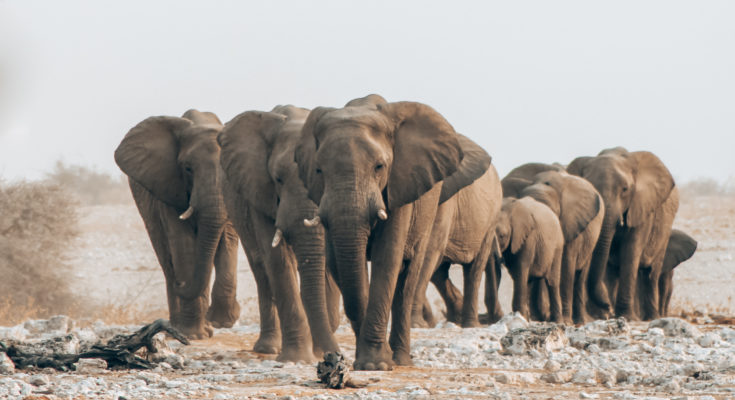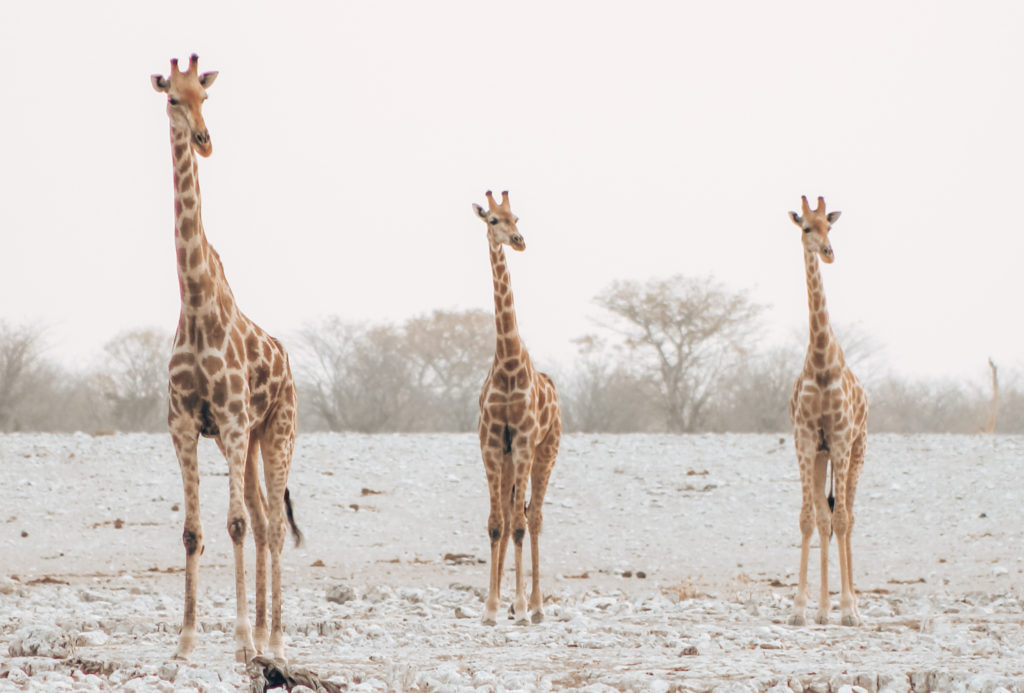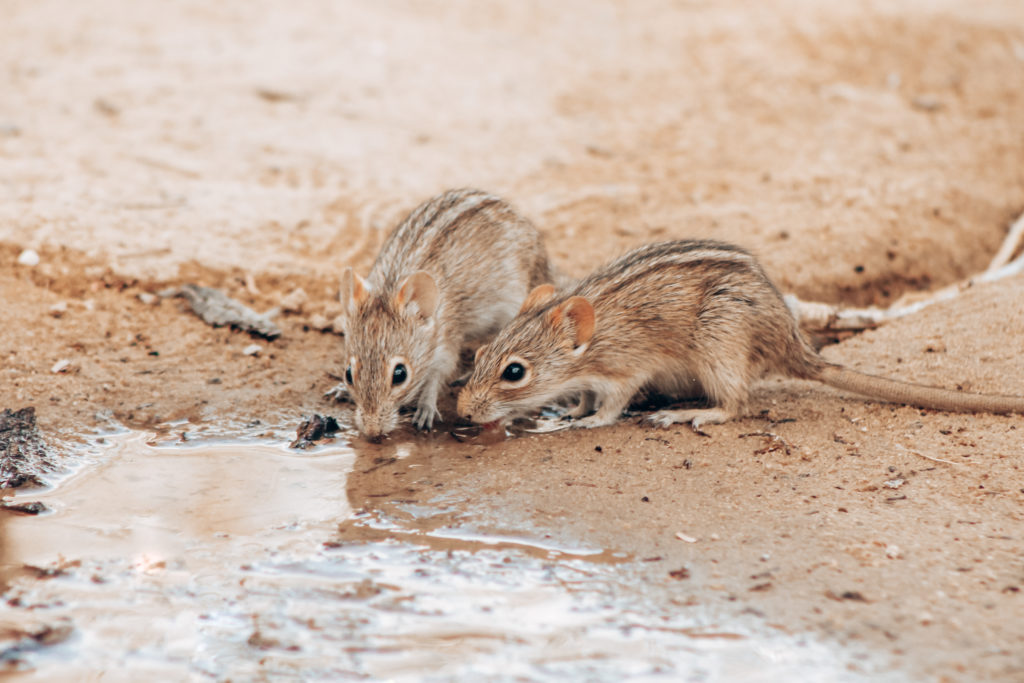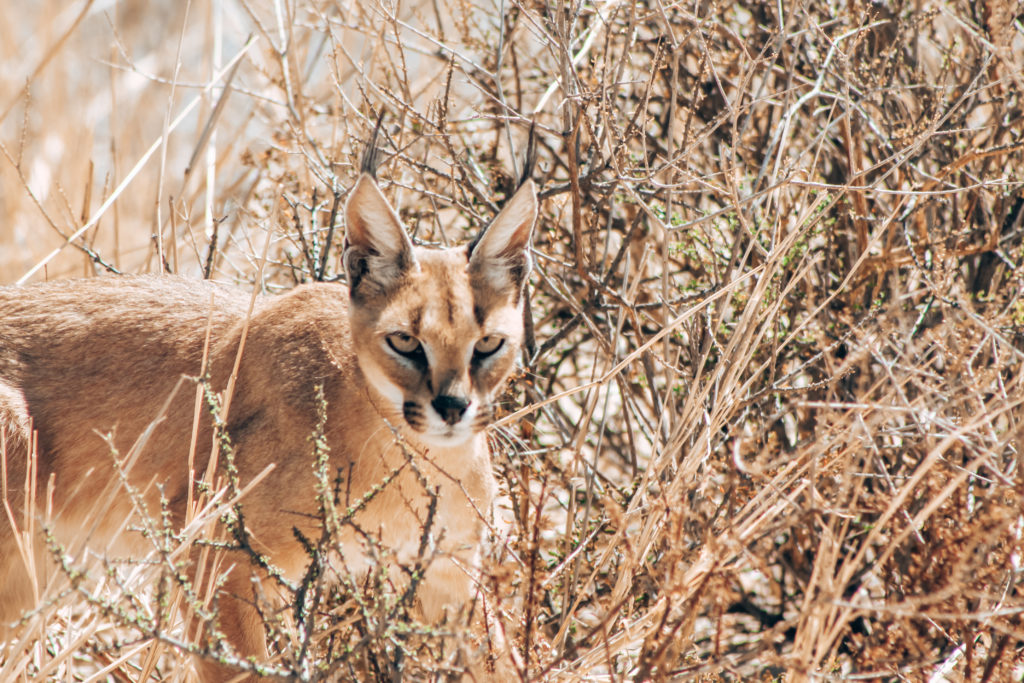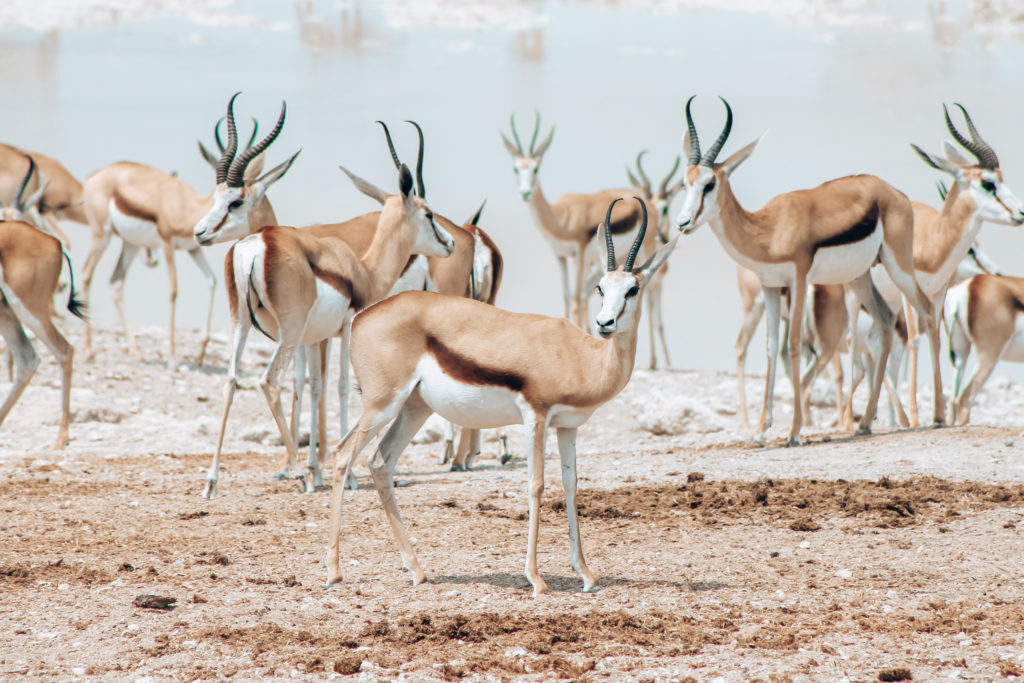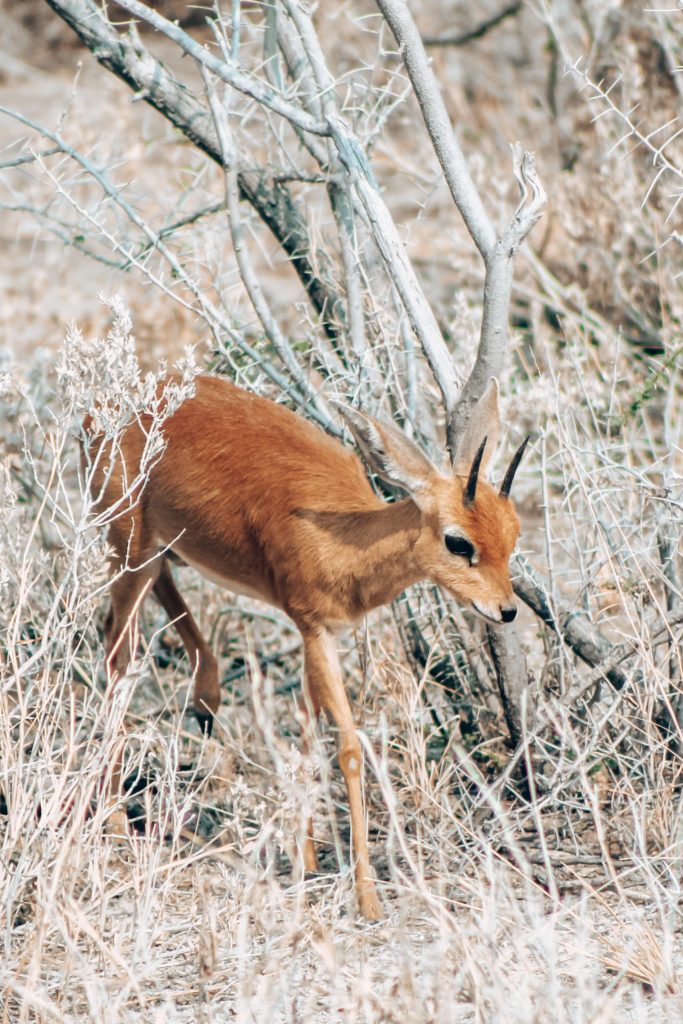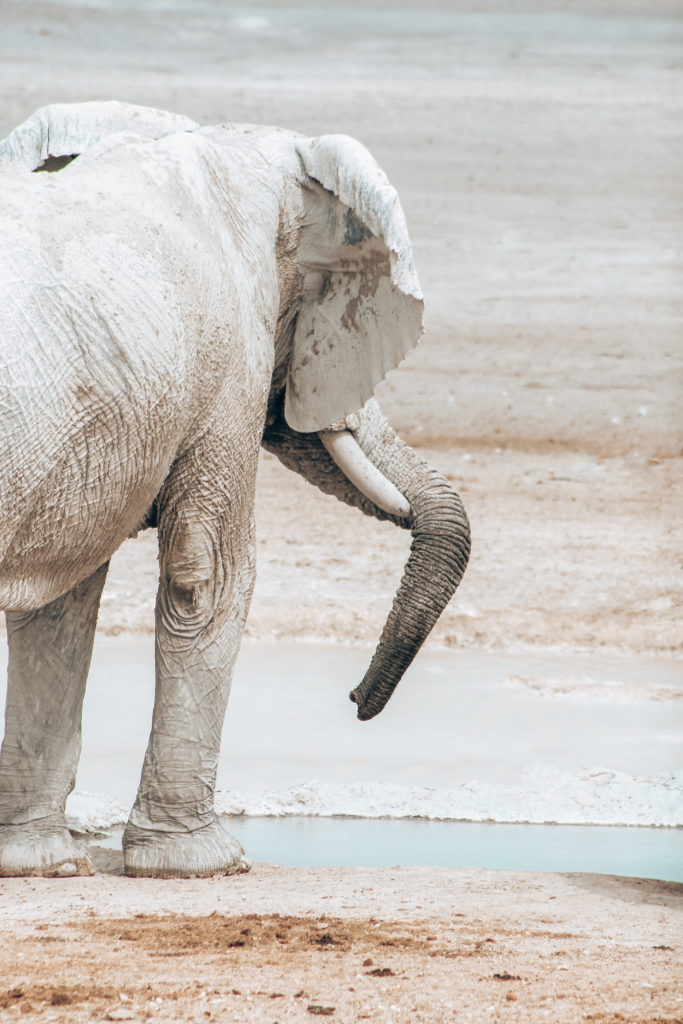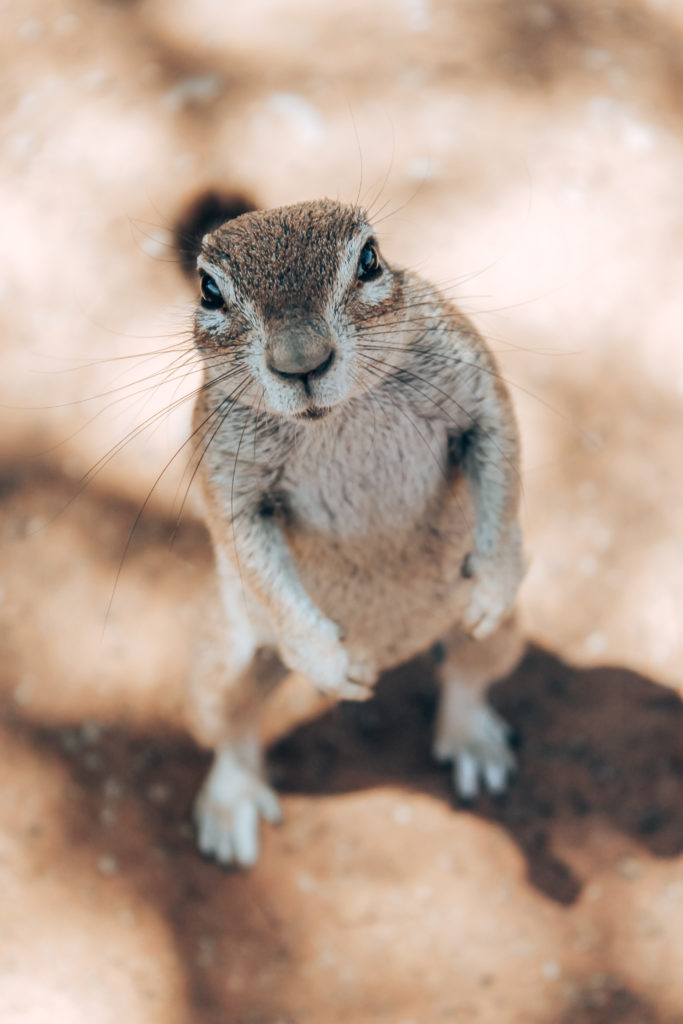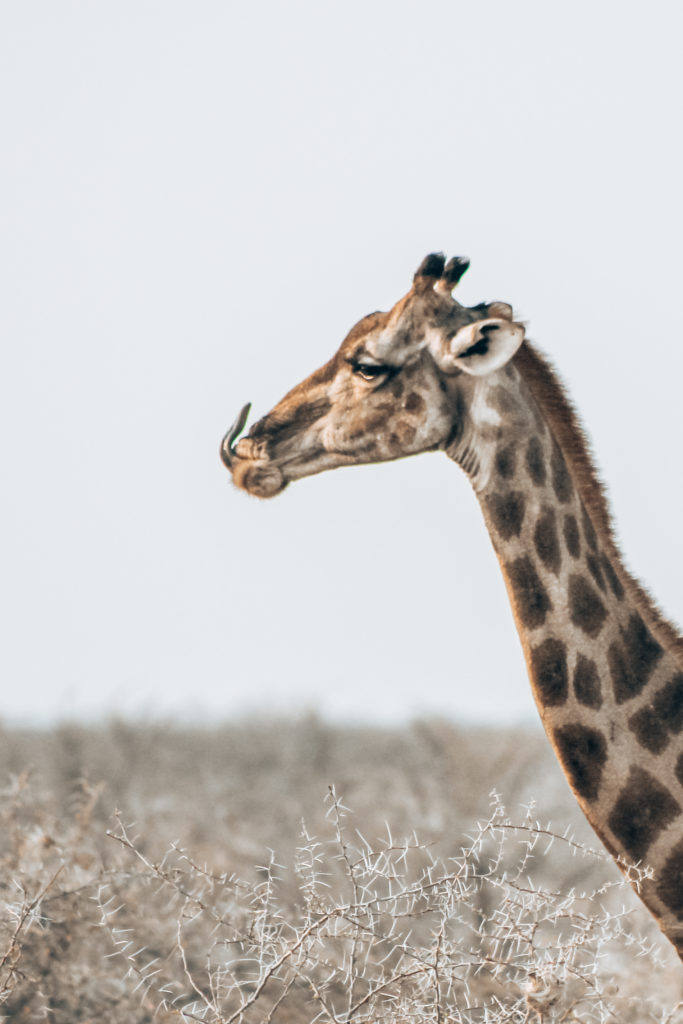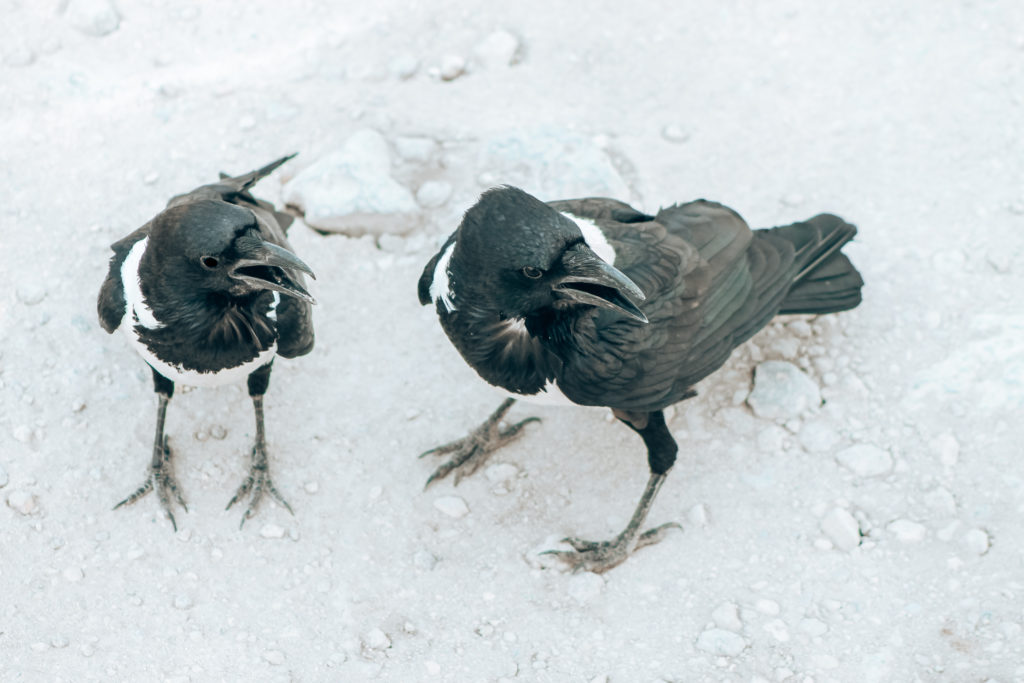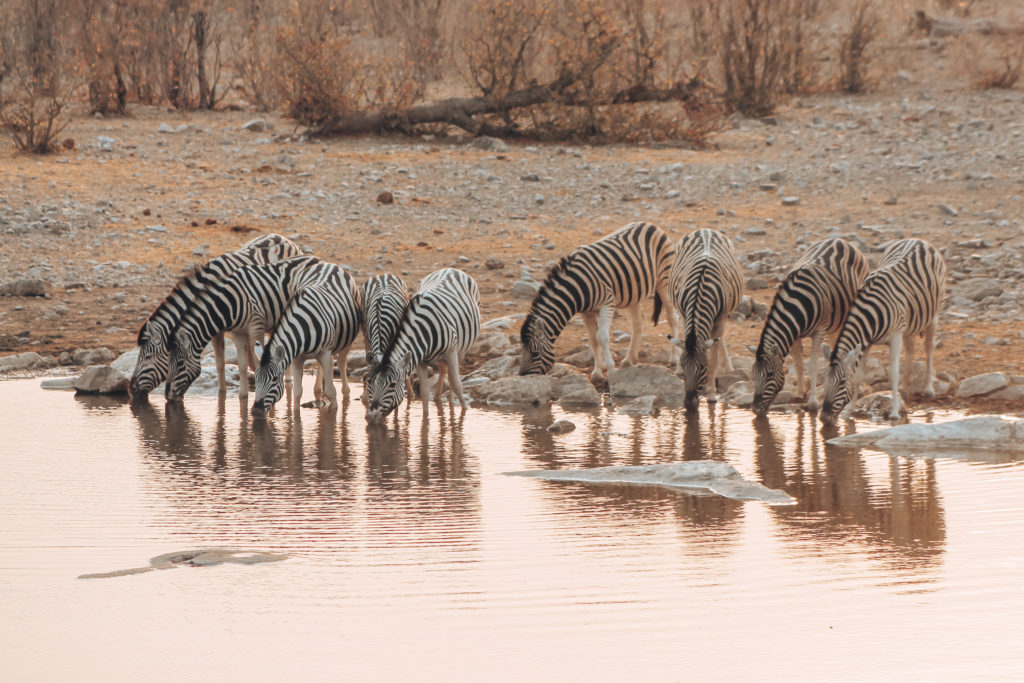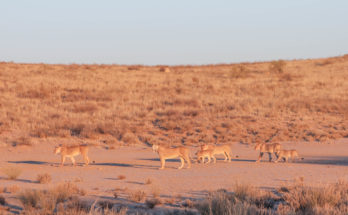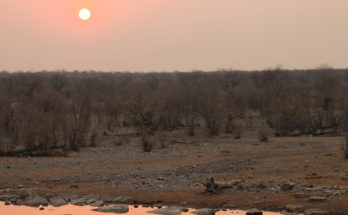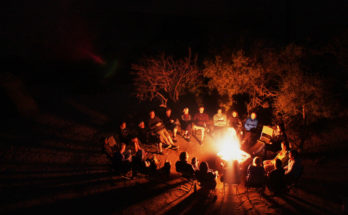Situated in the northwest of Namibia with its wide open spaces, little bush to hide animals and the highest number of leopards in any national park in Africa, Etosha National Park is any nature or wildlife photographer’s heaven. Named after the Oshindonga word meaning great white place in reference to the massive salt pan in the north of the park, Etosha is home to hundreds of species of mammals including some endangered ones, like the heavily poached black rhino. It is the most visited tourist attraction in Namibia, with more than 250 000 tourists and travelers from around the world flocking to Etosha every year.
The Etosha area and pan was first discovered by Swedish explorer Charles Andersson and British anthropologist and geographer Francis Galton, the man who coined the phrase “nature versus nurture”, when they visited the area as part of a Royal Geographical Society expedition in 1851. Along with doing groundbreaking research and writing books on the unexplored area, the two European men also established the first trade negotiations with the local Ovambo traders. Building on their foundations, by 1876 formal European trade routes ran east and west of the pan, drawing adventurous entrepreneurs from all over the world to the area.
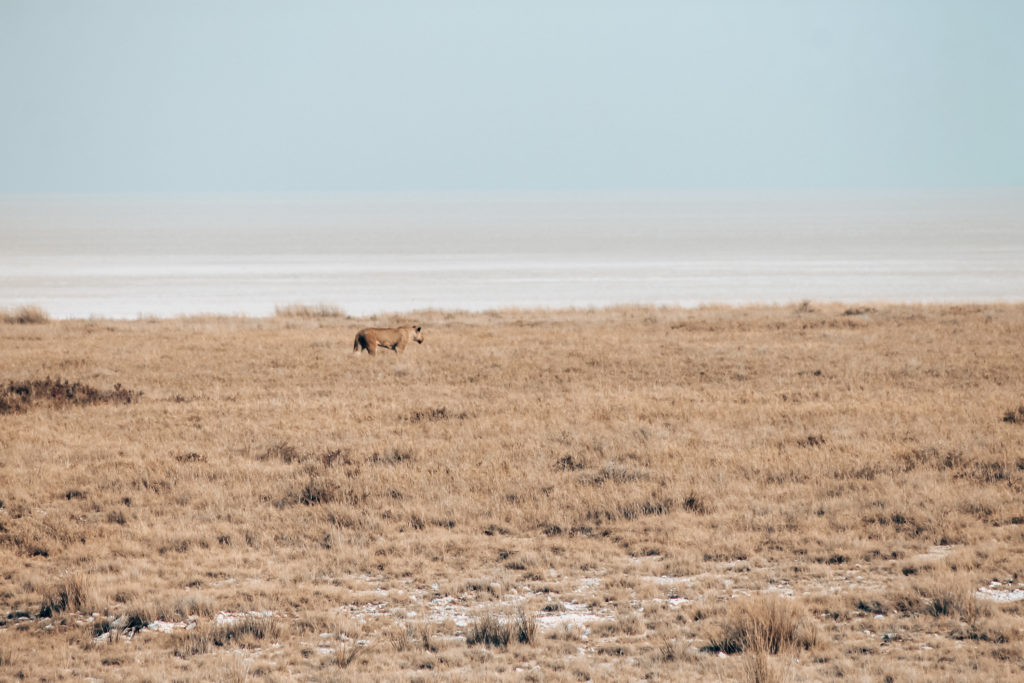
One such man was an American trader Gerald McKiernan who commented that “all the menageries of the world turned loose would not compare” to the wildlife he saw around him. “We fell in with immense numbers of animals beyond anything I had yet seen. I would scarcely be believed if I said that there were thousands of them to be seen at a sight,” McKiernan said of what we know today as northern Namibia. Similar to the rest of Africa, Etosha was soon crawling with over-enthusiastic American and European big game hunters and clashes between local tribes and foreign traders quickly caused animal populations to dwindle.
After a bit of back and forth, Germany finally planted its flag on South West Africa (as Namibia was called then) and by the start of the 20th century the country was firmly under German rule. In 1907 Dr. F von Lindqvist, the Governor of German South West Africa proclaimed Etosha a national game reserve that was reduced to its current size of just over 7,720mi² (20,000km2) in 1970. In the late 1970s and early 1980s, the “immense numbers of animals” described by McKiernan had taken another devastating blow during severe drought that tormented the area. The Border War that engulfed Namibia, South Africa and Angola at the time also contributed greatly to the demise of Etosha’s wildlife population.
Lucky for us, extreme conservation efforts in recent years have helped protect and reestablish many of the area’s local wildlife residents and today Etosha is once again one of the best places in Africa to enjoy the safari experience. Namibia is one of few countries in the world to specifically address habitat conservation and protection of natural resources in their constitution and it shows. Today, over 43% of Namibia’s surface area, including the Etosha National Park, is under conservation management and experiencing a place home to the largest free-roaming population of black rhinos and cheetahs in the world is something that should definitely be on your travel bucket list.
The park has 4 official entrances but most visitors enter the Anderson Gate as it is the closest entry point to the biggest and most popular camp, Okaukuejo. As the administrative centre of Etosha, Okaukuejo offers a wide range of accommodation as well as all the necessities such as a petrol station, shops, a restaurant and bar and a very welcome swimming pool that offers relief from the stifling African heat.
The other rest camps include the luxury Dolomite Camp where you can stay in safari style tents and enjoy a more off the beaten track experience, the Onkoshi Camp where you can stay in wooden chalets on platforms right on the edge of the mighty Etosha pan, the Halali Camp sitting right in the middle of the park with one of the most popular waterholes in the park, the impressive Namotoni Camp set in a former German fort and lastly the newest of the camps, Olifantsrus Camp that is a camping only experience. Each camp offers different accommodation types and facilities, but all will give you the true bushveld experience and help you reconnect with nature. For more information about the different camps and the rates per night, please visit the official Etosha National Park website.
Rest camps in Etosha are quiet, clean and comfortable. The extremely hot conditions in the area with summer temperatures exceeding 45 °C and long dry seasons concentrate wildlife around watering holes, many of them man-made and close to rest camps. Tourists can relax under shaded seating while watching the amazing creatures of Africa come for a refreshing drink, including the African bush elephant found in north-western Namibia. They are the tallest off all elephants but because of the limited vegetation available for them to feed on, they suffer from mineral deficiencies and thus have very short tusks.
Halali, my favourite campsite in the the park, is surrounded by a few hills. The thicker vegetation makes the area popular for elephants, rhino and the ever elusive leopard. A waterhole a few meters from the campsite built in such a way to view wildlife from a close without disturbing them is the perfect location for a few sundowners and as it is floodlit, it gives those willing to sacrifice sleep and blood to hungry mosquitoes the opportunity to observe and photograph nocturnal wildlife into the early hours of the morning. However, be prepared to be very quiet with almost no talking as serious game viewers are not scared of throwing dirty looks around or complaining about noisy campers to park management. Etosha is also a possible malaria area during the rainy season (November to June), so be sure to take prophylaxes medication when necessary and always use quality eco-friendly insect repellent.
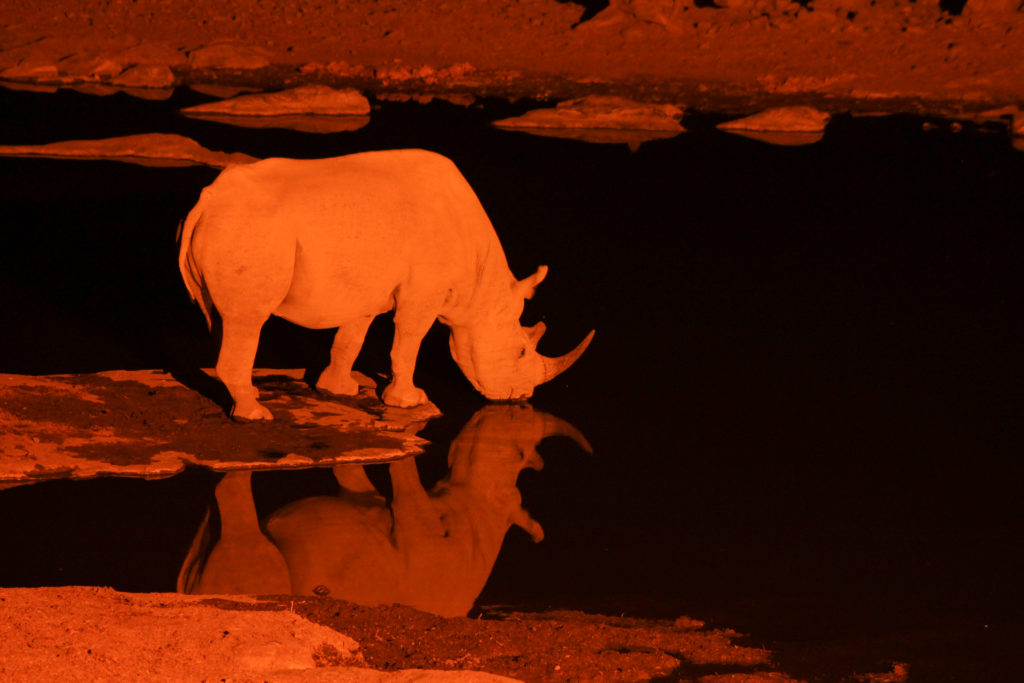
For most people, safari is not about hanging around campsites, but exploring the great African savanna from a Jeep or Land Rover, and Etosha is no different . Dusty planes dotted with elephants, black-backed jackal, zebra, springbok, steenbok, oryx, red hartebeest, blue wildebeest, lions, leopards, the occasional ostrich and scarcely any vegetation to hide them allow for fantastic game viewing and photo opportunities, so driving around in our own vehicle or taking a guided game drive is a must.
The great white pan which Etosha is named after is also a must-visit attraction in the park and stretches as far as the eye can see. For over 1,800mi² (4,760km2 ) to be exact. The salty clay pan, which is the biggest of its kind in Africa, covers about 25% of the national park and looks like a scene straight from the moon. Everything is white, powdery and much of a nothingness.
As with most of the wanders of this planet, no one is exactly sure how the pan formed in the first place. It is suspected that about 16,000 years ago, the Kunene River in Angola flowed all the way to Namibia where it formed a deep lake in Etosha, but due to tectonic plate movement the river and lake dried up and left only the salt pan behind. San legend has it that the formation of the Etosha Pan resulted from the slaughtering of an entire tribe with the exception of one woman. Apparently the grieving woman cried so much her tears formed a great salty lake which eventually dried up and left behind the huge white pan.
The pan is one of the highlights when visiting the park and visitors are able to leave game viewing vehicles to walk on the crunchy surface. In the pan itself there is little to no vegetation, with only a few soft grass species able to tolerate the salt, so wildlife rarely strays onto the barren landscape. However, during the rainy season rain water pools form and in particularly wet years the entire pan becomes a lake. This is when around 1 million flamingos flock to the pan which is the only known mass breeding ground for the pink birds in Namibia.
Namibia got its name from the Khoekhoe ‘click’ language, meaning the land of open spaces or the vast place, and Etosha National Park is exactly that. It is one of the most beautiful but trying places I have ever been to and I believe Namibia and its national parks is one of the last true untouched wildernesses of the world.
For more information about the park, where you can stay, what you can do in the camps and the rates and costs involved, please visit the Etosha National Park website for more information. If you would like to see more pictures of my time in Etosha, please visit me on Pinterest at @LuzanneFletcher and follow me on Instagram at @luzanne_f. Check out the related article section below if you want to read more about the amazing things to do and see in Namibia, or scroll on to download free mobile and desktop Lightroom presets to help you edit your pictures just like mine!

To help you make the most of the amazing pictures you will be taking at in the Etosha National Park, I have developed some amazing free mobile and desktop presets that you can use to transform your pictures. All you have to do is download the zip folder for either the mobile or desktop presets to the matching device, follow the easy step by step instructions and before you know if you will be editing like a pro! This preset works great on all kinds of photos and will give them a fun and bright look. Once you have used the presets, remember to tag me on Instagram at @luzanne_f and use the hashtag #TravelPresetsByLu so that I can see your amazing photos!
For the mobile presets you will need the free version of the Adobe Lightroom app that is available in the Android Play Store and in the Apple iStore. For the desktop presets you will need the paid for version of Adobe Lightroom. Great instructions on how to install and use the presets are included and will download automatically with your preset.
Here are some transformations using only my Etosha National Park preset!

